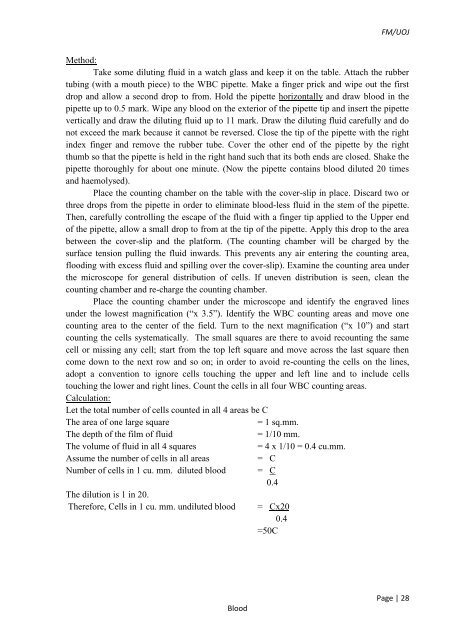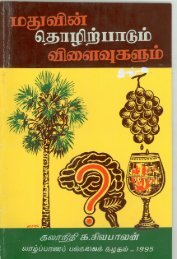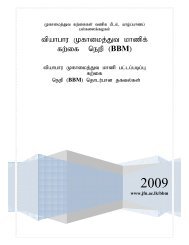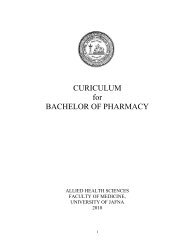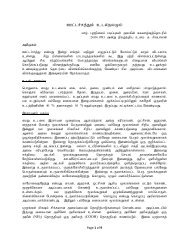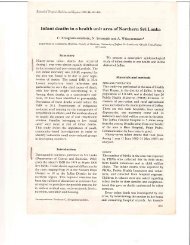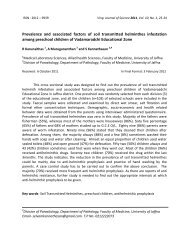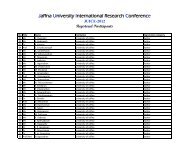MANUAL PHYSIOLOGY PRACTICAL - Repository:The Medical ...
MANUAL PHYSIOLOGY PRACTICAL - Repository:The Medical ...
MANUAL PHYSIOLOGY PRACTICAL - Repository:The Medical ...
You also want an ePaper? Increase the reach of your titles
YUMPU automatically turns print PDFs into web optimized ePapers that Google loves.
FM/UOJ<br />
Method:<br />
Take some diluting fluid in a watch glass and keep it on the table. Attach the rubber<br />
tubing (with a mouth piece) to the WBC pipette. Make a finger prick and wipe out the first<br />
drop and allow a second drop to from. Hold the pipette horizontally and draw blood in the<br />
pipette up to 0.5 mark. Wipe any blood on the exterior of the pipette tip and insert the pipette<br />
vertically and draw the diluting fluid up to 11 mark. Draw the diluting fluid carefully and do<br />
not exceed the mark because it cannot be reversed. Close the tip of the pipette with the right<br />
index finger and remove the rubber tube. Cover the other end of the pipette by the right<br />
thumb so that the pipette is held in the right hand such that its both ends are closed. Shake the<br />
pipette thoroughly for about one minute. (Now the pipette contains blood diluted 20 times<br />
and haemolysed).<br />
Place the counting chamber on the table with the cover-slip in place. Discard two or<br />
three drops from the pipette in order to eliminate blood-less fluid in the stem of the pipette.<br />
<strong>The</strong>n, carefully controlling the escape of the fluid with a finger tip applied to the Upper end<br />
of the pipette, allow a small drop to from at the tip of the pipette. Apply this drop to the area<br />
between the cover-slip and the platform. (<strong>The</strong> counting chamber will be charged by the<br />
surface tension pulling the fluid inwards. This prevents any air entering the counting area,<br />
flooding with excess fluid and spilling over the cover-slip). Examine the counting area under<br />
the microscope for general distribution of cells. If uneven distribution is seen, clean the<br />
counting chamber and re-charge the counting chamber.<br />
Place the counting chamber under the microscope and identify the engraved lines<br />
under the lowest magnification (“x 3.5”). Identify the WBC counting areas and move one<br />
counting area to the center of the field. Turn to the next magnification (“x 10”) and start<br />
counting the cells systematically. <strong>The</strong> small squares are there to avoid recounting the same<br />
cell or missing any cell; start from the top left square and move across the last square then<br />
come down to the next row and so on; in order to avoid re-counting the cells on the lines,<br />
adopt a convention to ignore cells touching the upper and left line and to include cells<br />
touching the lower and right lines. Count the cells in all four WBC counting areas.<br />
Calculation:<br />
Let the total number of cells counted in all 4 areas be C<br />
<strong>The</strong> area of one large square<br />
= 1 sq.mm.<br />
<strong>The</strong> depth of the film of fluid<br />
= 1/10 mm.<br />
<strong>The</strong> volume of fluid in all 4 squares<br />
= 4 x 1/10 = 0.4 cu.mm.<br />
Assume the number of cells in all areas<br />
= C<br />
Number of cells in 1 cu. mm. diluted blood = C<br />
0.4<br />
<strong>The</strong> dilution is 1 in 20.<br />
<strong>The</strong>refore, Cells in 1 cu. mm. undiluted blood<br />
= Cx20<br />
0.4<br />
=50C<br />
Blood<br />
Page | 28


